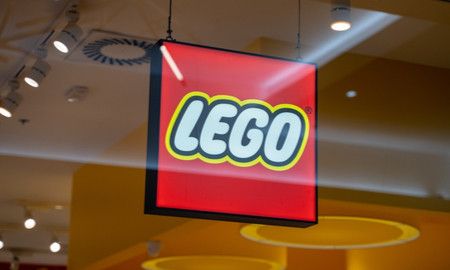Sign up for our free daily newsletter
YOUR PRIVACY - PLEASE READ CAREFULLY DATA PROTECTION STATEMENT
Below we explain how we will communicate with you. We set out how we use your data in our Privacy Policy.
Global City Media, and its associated brands will use the lawful basis of legitimate interests to use
the
contact details you have supplied to contact you regarding our publications, events, training,
reader
research, and other relevant information. We will always give you the option to opt out of our
marketing.
By clicking submit, you confirm that you understand and accept the Terms & Conditions and Privacy Policy
The EU General Court has upheld an earlier decision at the EU Intellectual Property Office (EUIPO) that found that a design protecting a Puma trainer was invalid because the singer Rihanna had publicly disclosed it.
On 6 March, the General Court agreed with the EUIPO's decision of August 2022 that found that Robyn Rihanna Fenty (also know as Rihanna) had worn shoes showing a prior design with the same features as the registered design 12 months before the application for registration was filed.
In those circumstances, EUIPO took the view that the prior design had been made public, which justified the invalidity of the registered design. Puma hadn't applied for the design until 2016.
A designer has a 12-month period after having publicly disclosed a design to register – the grace period.
The action was originally brought by Dutch children’s footwear manufacturer Handelsmaatschappij J. Van Hilst (HJVH), which had submitted images taken from Rihanna’s Instagram account ‘badgalriri’ which were dated mid-December 2014 and which related to Rihanna’s appointment as Puma’s new creative director.
Those images showed Rihanna wearing a pair of white trainers with a thick black sole. Those images were reproduced in several articles in online newspapers.
The General Court has upheld EUIPO’s assessment that those images were sufficient to demonstrate the disclosure of the prior design and that the disclosure could have become known to the circles specialised in the sector concerned.
In the judgment it stated that the images taken from the Instagram account named ‘badgalriri’, published in December 2014, “make it possible to identify, with the naked eye or by enlarging those photos, all the features of the prior design from various angles.”
The applicant Puma does "appear to call into question" whether the account was her official account in 2014 but the judgment said, "It should be recalled that the Instagram account from which the photos in question originate is Rihanna’s own Instagram account. "
In relation to the argument that nobody took an interest in Rihanna’s shoes in December 2014 and that nobody therefore perceived the prior design, the judgement pointed out that “in December 2014, Rihanna was a world-famous pop star”. Both her fans and the fashion sector had, at that time, developed a “particular interest in the shoes that she wore on the day on which the contract under which the star became the applicant’s creative director was signed".
The judgment added: “That being the case, it is perfectly reasonable to take the view that a not insignificant proportion of the people who were interested in music or in Rihanna herself, including her clothing, in December 2014 viewed the photos in question closely in order to discern from those photos the appearance of the shoes that the star wore, thus recognising the features of the prior design."
Varuni Paranavitane, of counsel at Finnegan said the decision was a reminder that while EU design law allows designer a grace period of 12 months to test products on the market before they file an application for a registered EU design right, "it is much harder to argue that any disclosures made prior to the 12-month period will not destroy novelty."
She added: "It illustrates that in-house PR and marketing departments and their legal teams should be aligned; particularly in relation to any disclosures to the public on social media or elsewhere."
Christoph Moeller, partner and patent attorney at Mewburn Ellis, said that to mitigate the risks associated with disclosure, it is advisable to register designs at the earliest possible stage, ideally before any public disclosure takes place.
He continued that the 12-month grace period, as outlined in Article 7(2) of the Community registered design regulation, only affords protection for a disclosure made by the "designer, his successor in title, or a third person as a result of information provided or action taken by the designer or his successor in title". In this case, he said, "it would have been informative to learn the court's reasoning as to whether a prior disclosure by a further party, here a celebrity on her private social media account, would ultimately qualify for the grace period, even though Rihanna was Puma's artistic director."
Email your news and story ideas to: [email protected]










